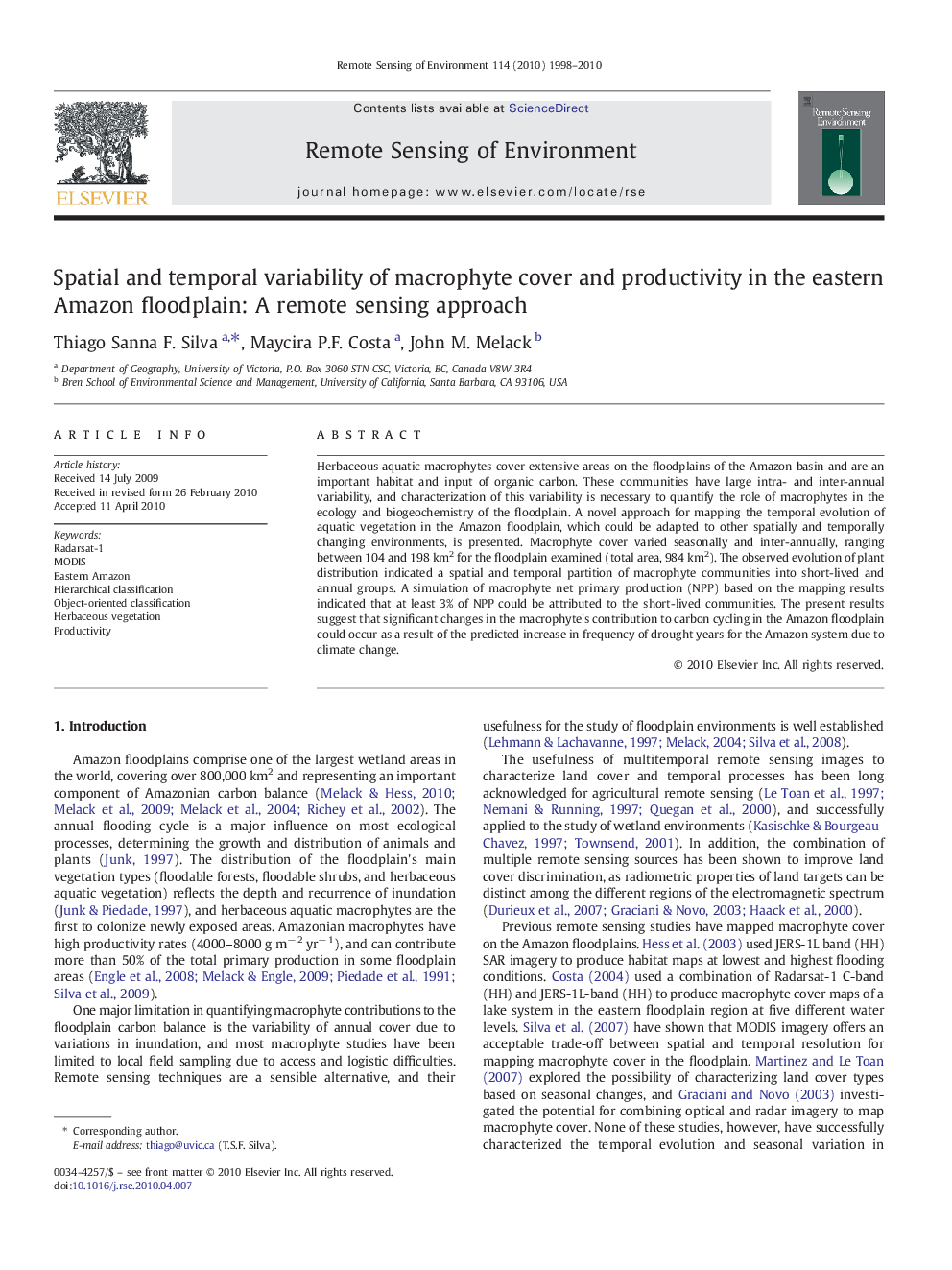| Article ID | Journal | Published Year | Pages | File Type |
|---|---|---|---|---|
| 4459802 | Remote Sensing of Environment | 2010 | 13 Pages |
Herbaceous aquatic macrophytes cover extensive areas on the floodplains of the Amazon basin and are an important habitat and input of organic carbon. These communities have large intra- and inter-annual variability, and characterization of this variability is necessary to quantify the role of macrophytes in the ecology and biogeochemistry of the floodplain. A novel approach for mapping the temporal evolution of aquatic vegetation in the Amazon floodplain, which could be adapted to other spatially and temporally changing environments, is presented. Macrophyte cover varied seasonally and inter-annually, ranging between 104 and 198 km2 for the floodplain examined (total area, 984 km2). The observed evolution of plant distribution indicated a spatial and temporal partition of macrophyte communities into short-lived and annual groups. A simulation of macrophyte net primary production (NPP) based on the mapping results indicated that at least 3% of NPP could be attributed to the short-lived communities. The present results suggest that significant changes in the macrophyte's contribution to carbon cycling in the Amazon floodplain could occur as a result of the predicted increase in frequency of drought years for the Amazon system due to climate change.
